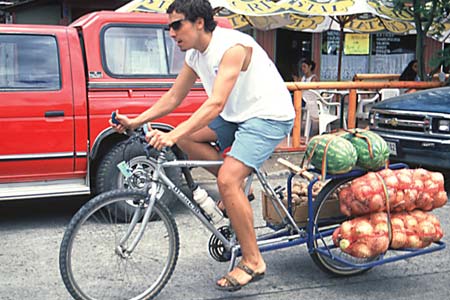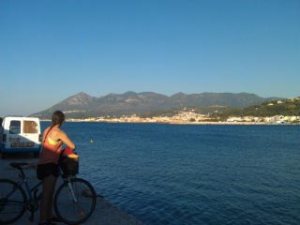By Ros Woodburn
If you’re observant you will lately have seen strange, canopied tricycles zooming around Tom Flood velodrome or other community circuits in town. It’s all leading up to the excitement that happens in late November at the Maryborough.
In Bendigo, HPV racing is a popular activity in 15 primary and nine secondary schools. But what happens when kids leave school? After the Maryborough event many students finish school and cannot compete in any further school team HPV racing. Many keen participants remain in the sport to assist younger enthusiasts, but for some that’s not enough.
John Taylor, a retired technology teacher and builder of trikes, saw the need to provide an opportunity for these riders to continue their passion for HPV racing. He helped instigate the formation of a central Victorian based community team.
“HPV racing has a unique quality which solicits a passionate following from many young people,” says John.
“The existence of community teams allows them to follow their passion beyond school so they continue to develop useful life skills like team work, physical endurance, driving skill, technological expertise etc.”
The central Victorian Wattle Racing team is made up of all ages, abilities, and male and female competitors. Speeds can average 45 kph over 24 hours of team racing, and all without any pollution, loud mechanical noise – just lots of sustainable huff and puff, and a bit of high tech material. And events for community teams like Wattle Racing are booming around the country.
The Australian HPV Super Series, run largely in South Australia under the auspices of UniSA, is an annual series of events designed to develop competitors’ teamwork, technological and engineering skills, enterprise and fitness and health. Known as Pedal Prix, the competition involves more than 200 teams from all over Australia and draws up to 35,000 spectators to its Murray Bridge 24-hour endurance race alone.
John Taylor explains that the sport has a spectacle of speed not found in other cycling sports, as well as providing a forum for technological innovation. “I believe it will continue to grow into the future,” he says.
Perhaps you have seen your youngsters enjoy the thrill of speed, teamwork, technology and design development. Want to have a go yourself? Check out pedalprix.com.au or chat with one of the many community teams now forming around the country.





